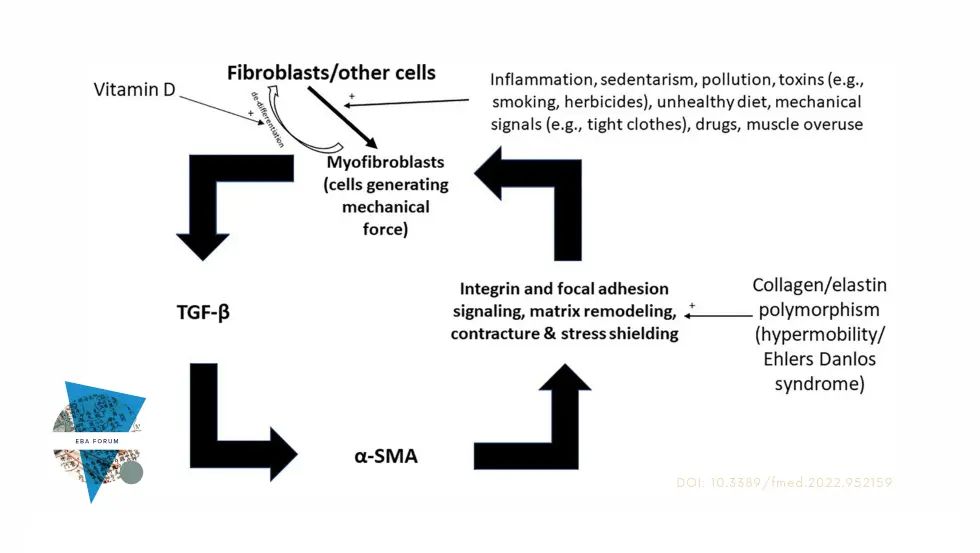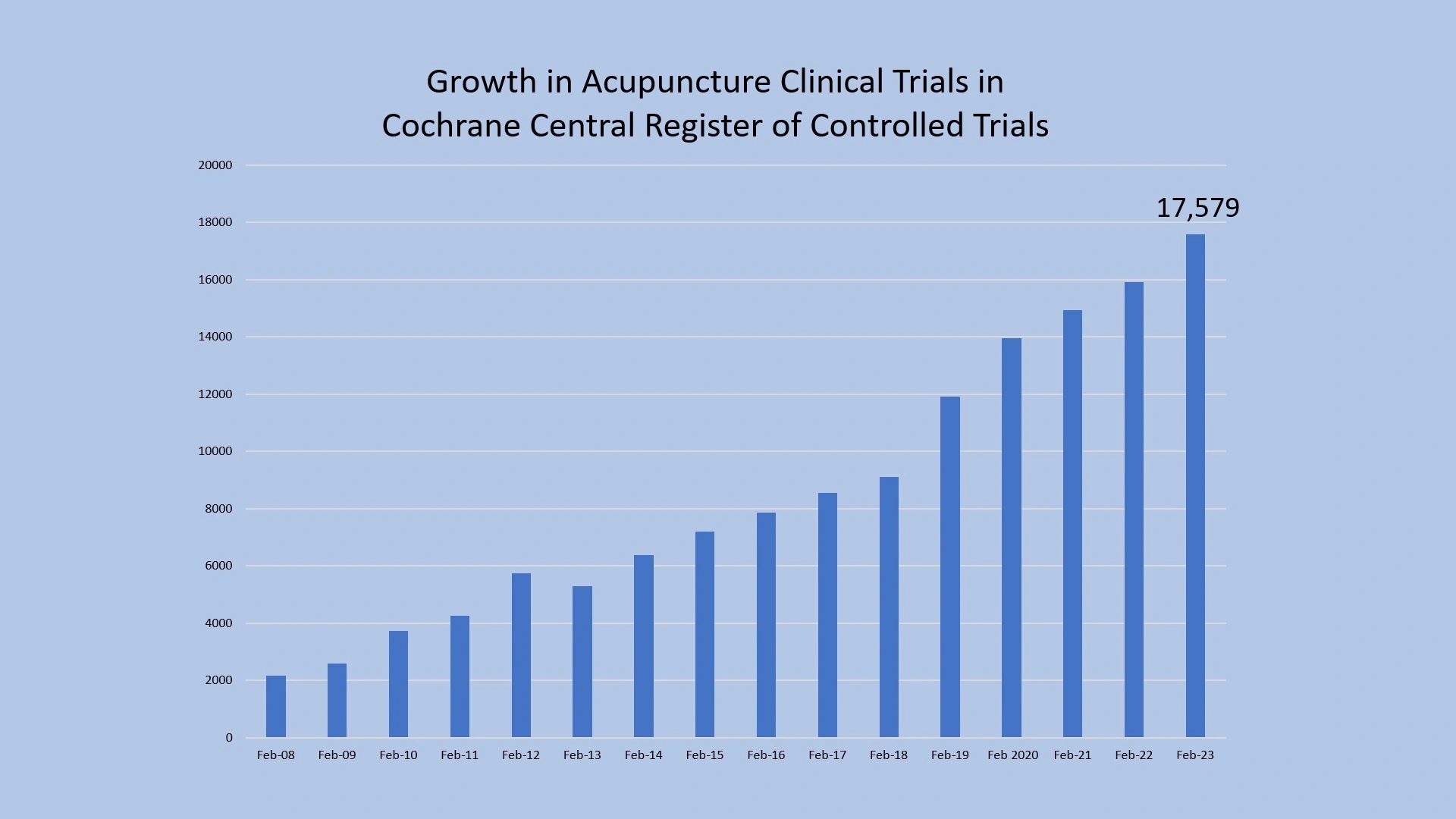#acupuncture
An Introduction to the Systems Approach
There is a paradigm shift underway, from analytical thinking to systems thinking. In time, it will transform the way business is done.
A similar paradigm shift is badly needed in medicine. How long will it take, until medicine will be done from a systems point of view (like traditional acupuncture has been doing for 2200 years)
https://thorsteinnsiglaugsson.substack.com/p/an-introduction-to-the-systems-approach
New data shows 70% of Brits prefer alternative therapy over painkillers. Sarah Major from The British Acupuncture Council explains why she feels acupuncture is a better alternative to ‘popping pills’.
https://www.youtube.com/watch?v=IG0ARpJPC3E
#acupuncture #pain #bacc #alternativemedicine
Webinar on Acupuncture-cost-effectiveness - April 4, 19:30 pm (GMT +1).
The ETCMA Research Task Force will be holding an event webinar on the Cost Effectiveness of Acupuncture. Sign up here:
https://docs.google.com/forms/d/e/1FAIpQLSd-HETk17HdvCoE6Szrl_UXp3cQpltPCGZyj9zM9Cegb_HB9w/viewform?usp=sf_link
Upon registration, the ZOOM codes will be sent to you.
#acupuncture #costeffective #etcma #researchtaskforce #webinar
Thank you Sandro Graca!
This paper summarizes the current status of acupuncture in the treatment of gynecological diseases and summarizes the progress of functional magnetic resonance imaging research related to acupuncture in the treatment of gynecological diseases in the past 10 years, mainly including the common types of gynecological diseases in acupuncture clinics, and the commonly used acupuncture points.
https://doi.org/10.1097/md.0000000000033268
#acupuncture #research #gynaecology #fmri

Suggesting a mechanism for acupuncture as a global percutaneous needle fasciotomy that respects tensegrity principles for treating fibromyalgia - Shiloh Plaut
https://www.frontiersin.org/articles/10.3389/fmed.2022.952159/full

Today we unite the global cancer community
Today we raise awareness
Today we inspire change
Today we fight for fairness
Today we help #CloseTheCareGap
So that everyday, everyone, everywhere has access to cancer care.
https://www.worldcancerday.org/
#WorldCancerDay #cancer #acupuncture

Research into acupuncture has had ripple effects beyond the field of acupuncture.
⭐️ This paper identifies five exemplars to illustrate that there is tangible evidence of the way insights gleaned from acupuncture research have informed biomedical research, practice, or policy.
🔗 https://www.acupunctureresearch.org/white-papers
📄 SAR's White Papers are the published result of periodic Think Tank retreats where SAR Board members explore and systematically review specific topics/issues in acupuncture research.
👉 These are "must-reads" for anyone interested in looking at acupuncture research from a wider perspective of what's happening in the field and then delving more deeply into each area of focus.
#societyforacupunctureresearch #sar #acupuncture #research #biomedicine
In 2009, Doug Dearth produced the famout documentary "9000 Needles" about this brothers recovery from a #stroke with the help of #acupuncture in Tianjin, China. In 2021, Doug completed another documentary, called "Return to Live", about the treatment of very difficult #neurological #diseases by Drs. Jeson and Linda Hao, using acupuncture.
Wonderful essay on the background of the modern Traditional Chinese Medicine #acupuncture.
https://www.linkedin.com/pulse/birth-tcm-acupuncture-owing-lot-herbal-doctor-who-scorned-brook-cheng/
Who Invented Dry Needling? Digging into The History
by Brook Cheng
Dry needling, also known as trigger point dry needling and intramuscular stimulation (Dommerholt J et al, 2006; Zhou K, et al, 2015), a therapeutic technique mainly used for treatment of muscle pain by various healthcare practitioners, including physical therapists, physicians, and chiropractors, among others (Crislip, Mark et al, 2016). The American Physical Therapy Association defines dry needling as a technique used to treat dysfunction of skeletal muscle and connective tissue, minimize pain, and improve or regulate structural or functional damage.
An Evolution From “Wet” to “Dry”
“Dry needling” is a terminology invented in 1940s referring to a hypodermic needle (a thin, hollow tube with a sharp tip) without injection of any liquid substance. The word “dry” was just used in contrast to a “wet” hypodermic needle that is used for intramuscular injections or for drawing blood.
The term ‘‘dry needling’’ was first used in a paper published in the British medical journal the Lancet by Paulett JD (1947), who, in a study of low back pain, concluded that pain relief could be obtained not only from the injection of procaine or saline but even "dry needling’’without injection of any substance.
So “pricking for a cure with a hollow needle without liquid substance injection” is what “dry needling” means from the very beginning.
Another Type of Needles Being Always “Dry”
For the therapeutic purpose, in contrast to the dry injection needle which is hollow, there is another type of needle which is solid. It is the needle used in acupuncture without liquid substance injection involved.
In addition, an acupuncture needle is much thinner than an injection needle. Being thinner is an important advantage of acupuncture needle as thinner needle will produce less pain when a patient is stabbed.
Acupuncture needles have never being used in a “wet” condition. So acupuncture is an out-and-out “dry needling”.
Replace Hollow Needles with Solid Ones
Although dry needling had been suggested as a treatment in late 1940s, no trials had ever been attempted until 1970s when an acupuncture fever hit the Western world. In 1979, Lewit K et al (1979) published a landmark paper in the development of dry needling. He used acupuncture needles as well as hypodermic ones and found that the former produced less bleeding and bruising.
From that point, the thinner and solid acupuncture needles gradually replaced the thicker and hollow hypodermic needles for the treatment of muscular-skeletal conditions with pain as a primary symptom.
Who Invented Dry Needling: The West or The East?
As mentioned earlier, a solid acupuncture needle has never been used in a “wet” condition but always being used “dry” (without any liquid substance involved). This condition has remained unchanged since the very beginning more than 2000 years ago in China.
In this context, the tangible “dry needling” is essentially a technique invented in ancient China, although the Western researchers in 20th century did "linguistically" invent a terminology “dry needling”.
Therefore, when the term ‘‘dry needling’’ first time coined by Paulett JD (1947) after he had relieved his patients' back pain using a "dry’’ hypodermic needle, he just repeated what the ancient Chinese doctors had already done 2000 years earlier as described in Chinese medicine classics Huangdi Neijing (Suwen 41, On Back Pain Relief by Needles 刺腰痛): Pricking for a cure with a dry needle without any liquid substance injection involved.
Therapeutic “Dry Stone”
More interestingly, the ancient Chinese doctors 2000 years ago not only invented “dry needles”, but also invented “dry stones” - sharp pieces of stone used to cause a bleeding of the skin for a cure.
Tangible Invention vs Linguistic Coining
In short, ancient Chinese doctors in the East invented the tangible “dry needling”. The medical researchers in the West 2000 years later coined the linguistic “dry needling”.
Wet or Dry Not An Issue: What Is The Essence?
In China, there were times or occasions a doctor would stab a patient with a “wet” needle which was just soaked in boiling water for sanitization purpose. That was needed when a needle used on one patient was reused for another patient.
So wet or dry? It is not an issue at all. The essence is “stimulation with a sharp for a therapy”.
References
Brav EA, Sigmond H: The local and regional injection treatment of low back pain and sciatica. Ann Int Med 15: 840–852, 1941.
Crislip, Mark. "Dry needling". Science-Based Medicine. 2016
Churchill, James Morss, A Treatise on Acupuncturation, 1821
David Legge, A History of Dry Needling, Journal of Musculoskeletal Pain , J. Masculoskeletel pain, 2014.
Dommerholt J, del Moral OM, Grobli C. "Trigger point dry needling" . Journal of Manual & Manipulative Therapy. 2006 14 (4): E70–E87.
Esteban, Michelle, Acupuncturists, physical therapists battling over so-called 'dry needling' technique, 2016, https://komonews.com
Huangdi Neijing: Suwen 41, On Back Pain Relief by Needles (刺腰痛), BC 100
John Dwyer, Turf War Over Who Can Claim The Title Of Acupuncturist, The Conversation 2012
Lewit K: The needle effect in the relief of myofascial pain. Pain 6: 83–90, 1979.
Paulett JD: Low back pain. Lancet 2: 272–276, 1947.
Morris, William, Acupuncture and Closure: Turf Wars, Acupuncture Today, 2013
Reno, Jamie, Acupuncturists and Physical Therapists Declare War Over Over ‘Dry Needling’, 2016, www.healthline.com
Stainton, Lilo H, Physical Therapists Win Latest Battle in Turf War... New Jersy Spotlight News 2018.
Zhou K, Ma Y, Brogan MS. Dry needling versus acupuncture: the ongoing debate. 2015. Acupunct Med. 33 (6): 485–490.
#dryneedling #physotherapy #painrelief #acupuncture
Acupuncture Relief Project
Episode 7: Compassion Connects: Future doctors of Nepal
https://www.youtube.com/watch?v=f0l1BthnQ3I
#acupuncture #Nepal #ARP #compassion
The British Medical Journal (BMJ) now has a whole section on #acupuncture, which includes guidance on clinical #trials, economic analysis, and development of clinical practice guidelines (1). Acupuncture is now recommended in many countries as a viable #treatment strategy for the management of various conditions and has found a growing place in integrative #medicine (2).
And in adition to that, Stephen Birch et al have been documenting the number of clinical practice guidelines and treatment guidelines recommending for or against acupuncture for some years now. At the ICMART conference in Bologna in October (3) Birch presented the team's latest figures, namely 9,340 recommendations for acupuncture and 402 against. Most of the recommendations against were based on "insufficient evidence". Recently Stephen has turned his attention to Australian Federal and State Government Health Departments' advice on acupuncture published on sponsored or recommended websites.
(1) https://www.bmj.com/acupuncture
(2) https://doi.org/10.1016/j.imr.2022.100873
(3) https://www.icmart2022.org
Long Covid is a new condition and the best way to treat it is not yet understood. Evidence like this from Hong Kong suggest that the benefits of acupuncture for people with long covid in the UK should be investigated. Acupuncture is recommended in NICE guidelines for fibromyalgia which is also potentially triggered by a virus.
#research #tcm #evidence #acupuncture #longcovid #fibromyalgia















